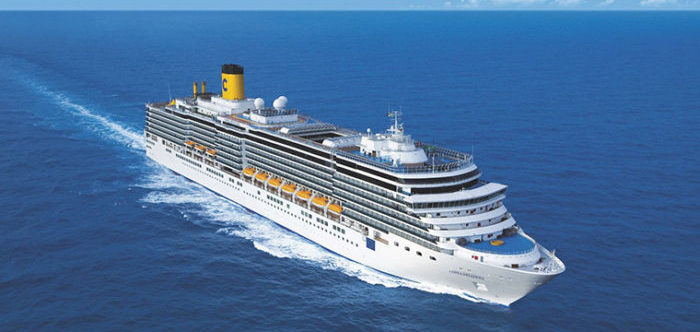
China’s zero-tolerance COVID-19 policy continues to hamper the reopening of the market for international cruise ships, even though travel restrictions related to the pandemic are being relaxed in most regions of the world. With the ongoing cancellation of Asian restoration plans, Bloomberg reports that Carnival Corporation is planning more reorganisation for its Costa brand, which was an early pioneer in the Chinese market.
Due to “continued doubts” about when international cruises would resume in East Asia in their whole, Costa Cruises has “decided to reconfigure its organisation in the region,” the business stated in a statement. According to Bloomberg, the newest development occurred shortly after President Xi Jinping of China was re-elected for a third term. Bloomberg argues that Xi Jinping’s strong zero-tolerance attitude further isolates China from the West.
China had been the fastest-growing market for cruise ships before the outbreak. Costa (who joined the market in 2006) and Royal Caribbean International were the earliest operators to send state-of-the-art cruise ships to China. More than 4 million passengers, primarily from China, were coming from Asia in 2019. Although China accounted for five percent of the industry’s deployment, several cruise lines were already cutting back, citing slowing growth in China and a lack of a developed marketing infrastructure. These lines included Princess Cruises, Norwegian Cruise Line, and Royal Caribbean International, all owned by Carnival Corporation.
Before the pandemic hit, Costa had established an office and trained workforce and begun marketing to the Chinese market in preparation for constructing two massive new cruise ships to replace ageing vessels serving the Chinese market. Reportedly, the company has opted to restructure its operations, shifting its emphasis from future homeporting in Asia to outbound marketing via regional reps.
With the departure of Arnold Donald in August, Carnival Corporation’s previous chief executive, Josh Weinstein, has taken this latest step in a series of reforms he has instituted since taking over the helm. During a conference call with shareholders at the end of September, Weinstein said that the company was actively working to increase sales across all its brands.
According to Weinstein’s statements to analysts, “we are reducing Costa’s capacity by 10% from 2019 levels while strengthening our highly successful Carnival Cruise Line brand through the previously announced transfer of three ships, including two via our innovative Costa by Carnival initiative launching in 2023.” This move is in response to the “continued closure of cruise operations in China and our Costa brand’s significant presence there pre-COVID.” With the addition of the Costa fleet, Carnival may increase its focus on the cruise market.
The Costa Luminosa (92,700 gross tonnes), an older cruise ship previously owned by Costa and a near-design twin to the current fleet of Carnival ships, was recently sold to Carnival. The vessel has been renamed and repositioned to address Carnival’s itineraries to Australia and Alaska gaps. Even more, capacity will be lost in 2023 and 2024 when the newly built 135,500 gross tonne sister ships Costa Venezia, which had briefly entered the China market in late 2019 before the shutdown, and the Costa Firenze, which was instead introduced in 2021 sailing from Italy, will transfer to the new joint venture, Costa by Carnival.
The Costa Magica, a vessel initially launched in 2004 with a gross tonnage of 102,000, is slated to be remodelled and transferred to Carnival Cruise Line. It was scrapped, but the ship is still sitting idle. In addition, it has been reported that Costa has scrapped a 2023–2024 cruise scheduled to take place on the Costa Fortuna, a sister ship to the Costa Magica launched in 2003, once the latter returns from a programme in South America. In September, Costa also revealed that the cruise ships Costa Venezia and Costa Diadema, both planned for use in the Mediterranean, would be docked for the winter of 2022-2023.



 share
share







































